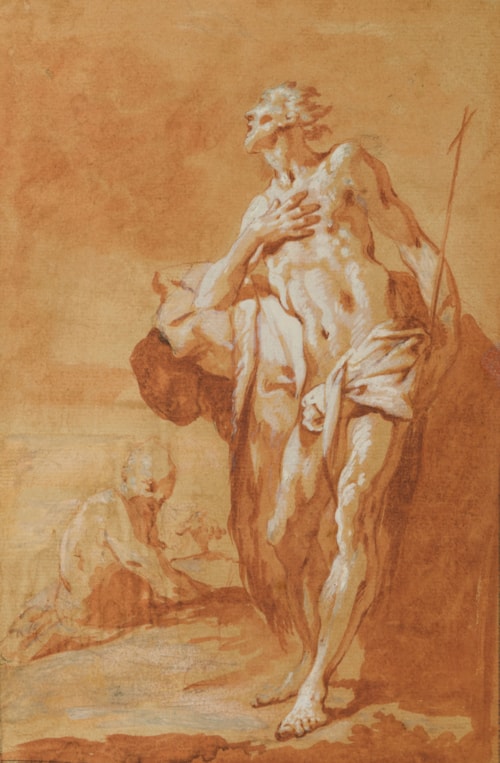
Sigismondo CAULA
Modena 1637 - Modena 1724
Biography
Born in Modena and trained there by the French artist Jean Boulanger, with whom he worked on the fresco decoration of the Ducal palace at Sassuolo, Sigismondo Caula spent three years in Venice between 1667 and 1670. There he was influenced by contemporary Venetian painting, and in particular the works of Antonio Molinari and Johann Carl Loth, as well as the earlier works of Paolo Veronese and Jacopo Tintoretto. It may also have been as a result of his exposure to Venetian draughtsmanship of the period that Caula developed a preference for working on tinted paper in his own drawings. After his return to Modena, Caula earned several important ecclesiastical commissions, painting frescoes for the Duomo in Modena and working in several other churches in the city, and was also often employed by the d’Este family. Among his most significant paintings was a very large Saint Charles Borromeo Administering the Eucharist to Victims of the Plague, painted in 1685 for the church of San Carlo in Modena and today in the Galleria Estense there. His last known commission was received in 1708, for the ceiling decoration of the church of San Agostino.
Caula’s relatively small corpus of drawings is characterized by a highly pictorial technique and bold contrasts of light and shade. A number of drawings by the artist are in the Galleria Estense in Modena, while other examples are in the British Museum in London, the Metropolitan Museum of Art and the Pierpont Morgan Library in New York, the Musée des Beaux-Arts in Orléans, the Ashmolean Museum in Oxford, the Ecole des Beaux-Arts in Paris, and elsewhere.


